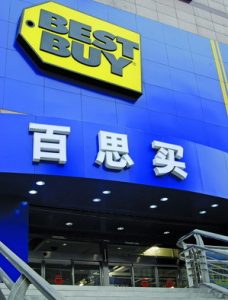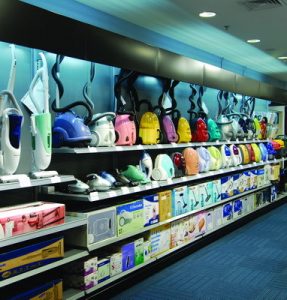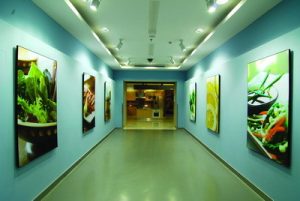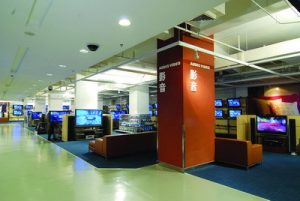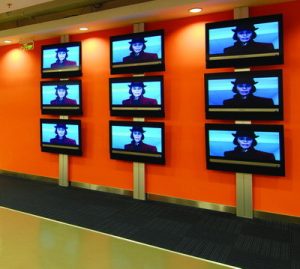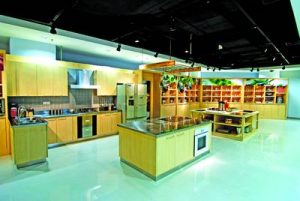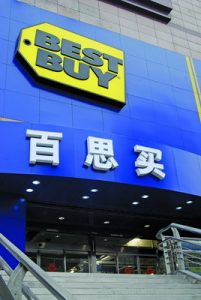Consumer electronics sales in China are projected to be nearly $85 billion (U.S.) this year and to grow in the double digits for the next decade. And in a country with a mushrooming consumer class, much of the population is under 35 – the target market for home theaters, MP3 players, flat screens and video games.
All reason enough for Best Buy to consider entering the Chinese retail market. But the largest consumer electronics retailer in the U.S. had another compelling reason. It was sourcing an increasing amount of its merchandise from China. So the retailer decided to cut out the middleman – which in this case is 5000 miles of Pacific Ocean water – and open a store there.
In 2006, Best Buy purchased Jiangsu Five Star Appliance, China's fourth-largest consumer electronics retailer, for $180 million, giving it a 136-store toehold in eight provinces, including those surrounding Shanghai.
And, in January, the retailer opened its first Chinese Best Buy store, in Shanghai’s Xujiahui commercial area, the city’s premier shopping district.
But, of course, opening a new store in China is not quite the same thing as opening one in Chicago. “There’s a completely different culture and language to deal with and understand,” says Sharon Lessard, Best Buy’s senior director, international store design and development, at the time the project was being put together. (She’s since moved to Limited Brands’ Bath & Body Works division.)
Advertisement
So the retailer did its homework and found some promising opportunities – such as an eager buying public. The Chinese love technology. And while there are a number of entrenched consumer electronics retailers there already, the predominant retail model is price-driven. The stores are all owned, managed and staffed by the brands. Salespeople try to drive shoppers to specific products rather than matching products to shoppers’ needs and budgets. There’s little information about the differences among products or the benefits of one brand versus another. As such, there’s almost no service component to the shopping experience.
Best Buy saw that as its entry point to the burgeoning market – a branded Best Buy store, clad in Best Buy blue with the iconic Best Buy logo. “Shanghai is a very new city,” says Lessard. “Twelve years ago, there were rice paddies everywhere. Today, there are construction cranes.” And while there are lots of exterior LED screens and large graphics banners on the building Best Buy was going to inhabit, she explains, the architecture is nondescript, with a plain marble facade. “A blue building would have made us distinct,” Lessard says.
Perhaps too distinct. After wading through China’s four levels of approval – national, city, town and provincial – Best Buy had to be content with blue cladding for the front of the building only.
Group Dynamics
Inside the store, Best Buy research found that the Chinese shop in groups – entire families, say, or bunches of teenagers – clogging the aisles. “They come for the afternoon,” says Lessard. “It’s a social activity.”
Advertisement
So moving people around and through the store became a central challenge in establishing the convenient shopping experience Best Buy was seeking. The aisles of the store, then, are wide and uncluttered. There’s also a lot of navigational information, signage on columns, clear departmental markers, even maps, all through the store.
“We tried to establish an experiential environment,” Lessard says, “much different than what Chinese shoppers are used to. In most Chinese appliance stores, shoppers see what they want, then move to a table where they negotiate prices and terms with the vendor and then to another station where they pay for the sale. It’s very rushed and pressured. We tried to calm the process down, with lots of opportunity for the shopper to interact with our blue-shirted salespeople.”
Setting up a logical progression of departments throughout the four floors and 80,000 square feet was also an objective. The store’s first floor, which is actually the third floor of the 40-story building (and connected to the city’s two busiest subway stations), needed to be attention-grabbing. Best Buy research showed that 5000 people walk by that door every half-hour – a lot of concentrated activity for a retailer accustomed to building one-level suburban stores – so it had to re-examine all its adjacencies.
The first floor has what Best Buy felt was the most compelling merchandise: the computers, peripherals, accessories and technical services. That level also has a designated Geek Squad shop – the retailer’s computer support task force – to underscore Best Buy’s emphasis on service.
Advertisement
The second floor has home theater and digital imaging products and the Magnolia Home Theater Store that has proved so popular in the U.S. The third floor is cellular products and small appliances. It also has a gourmet appliance shop, a whole new product area for Best Buy. The shop is a working kitchen, set up in a high-end showroom environment, featuring live demonstrations.
And the fourth floor is for white appliances, a big product category in China. “Most Chinese apartments are empty shells,” Lessard explains. “The renter has to bring in his own refrigerators, ovens, water heaters, dishwashers and the like. It’s the first thing people buy. But everything has to be movable.”
The store also had to have room for back stock, so 15,000 of the 80,000 square feet is for storage. “Most people walk to the store, ride their bikes or take mass transportation,” Lessard explains. “There are few cars and almost no parking. So delivery is critical.” Thus, most products in the store – especially large items – are for display and demonstration only and there’s a small warehouse on each floor. For larger storage, Best Buy leased a distribution center in Shanghai.
Blue cladding and blue shirts notwithstanding, Best Buy is not a recognizable brand to the Chinese shopper. But it is the number one consumer electronics retailer in the world. And it’s American, which appeals to the status-conscious Chinese. “We’ll get them into the store because we’re new and from the U.S.,” Lessard says. “If we deliver on our brand promise, we will win the Chinese consumer. And that, of course, will lead to brand recognition and global expansion.”
Today China, tomorrow the world.
Photography: Kevin SunBo, Rinch Cultural, Shanghai, China
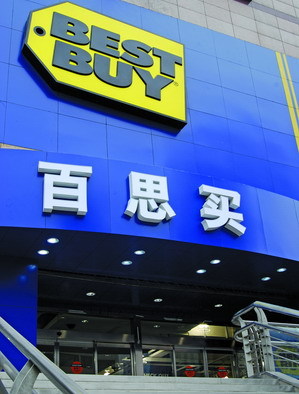

 Photo Gallery2 weeks ago
Photo Gallery2 weeks ago
 Headlines5 days ago
Headlines5 days ago
 Headlines1 week ago
Headlines1 week ago
 Headlines2 weeks ago
Headlines2 weeks ago
 Headlines2 weeks ago
Headlines2 weeks ago
 Headlines4 days ago
Headlines4 days ago
 Headlines3 days ago
Headlines3 days ago
 Designer Dozen1 week ago
Designer Dozen1 week ago
